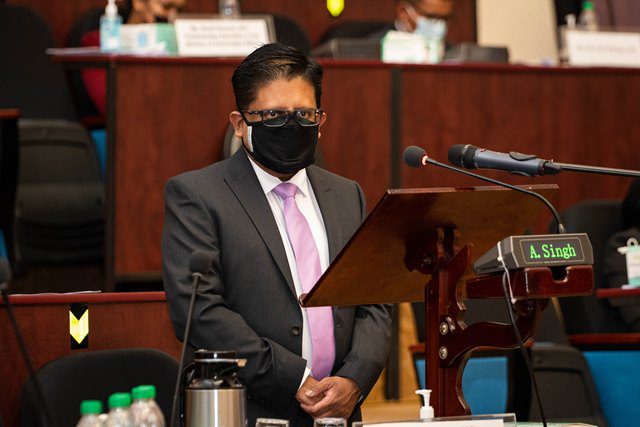Direct revenues from oil sales, royalties, and interest in the first three years of oil production offshore Guyana amount to more than US$2 billion.
Before oil production started, the government had not exceeded such spending in any of its national budgets. In 2021, the government passed an initial budget of GY$383.1 billion (approx. US$1.84 billion) with some additional appropriations during the year. But oil will allow the government to expand spending dramatically.
As of December 31, the Fund held US$1.27 billion, but expects to receive additional payments for two December oil lifts which takes its balance to US$1.42 billion. The latter is the Fund’s effective balance because it will allow the government to withdraw more to support the country’s 2022 national budget. The balance accounts for funds accrued from oil sales and royalties for 2022. Before, the government had withdrawn US$607 million to support the 2022 budget, from oil sales and royalties from 2020 and 2021.
The first year of spending oil revenues prioritised expansion and modernisation of public infrastructure. With 2022 offering nearly half a billion US dollars more, the government has a lot more room to expand spending. It plans to use the bulk of the revenues on capital projects.
The Bank of Guyana said that Guyana has obtained 22 lifts (22 million barrels) of profit oil since the inception of the Fund. A lot more has been produced, but lifts are shared between Guyana, ExxonMobil, Hess and CNOOC, guided by the fiscal terms of the Stabroek Block production sharing agreement.
Two projects – Liza Phases One and Two – operate offshore Guyana, producing more than 360,000 barrels of crude per day (bpd).

Since the inception of oil production, oil production has gradually increased every year. This trend will continue, with a corresponding increase in revenues expected.
ExxonMobil plans to place seven floating production, storage and offloading (FPSO) vessels offshore Guyana, with expected crude production capacity in excess of 1.2 million bpd by 2027.



